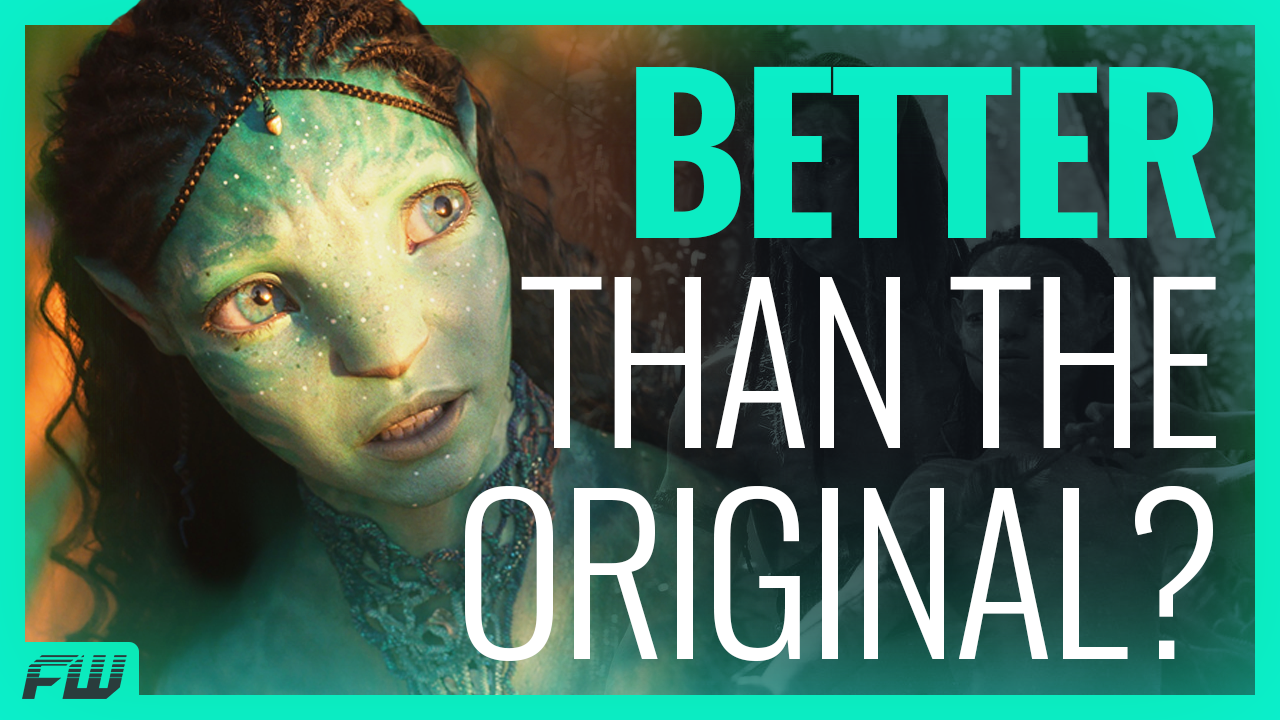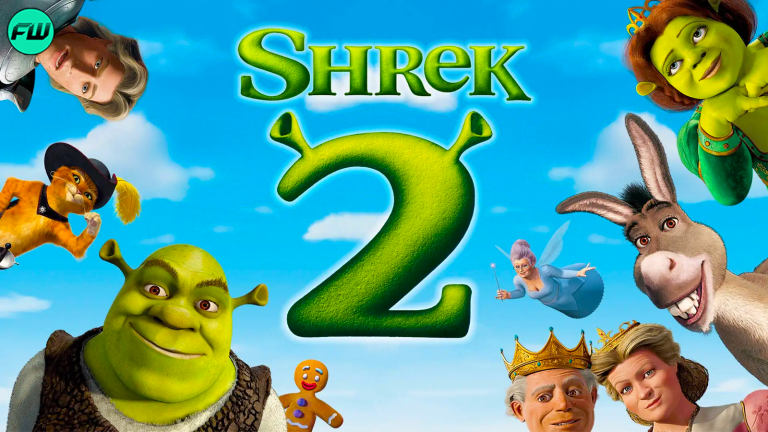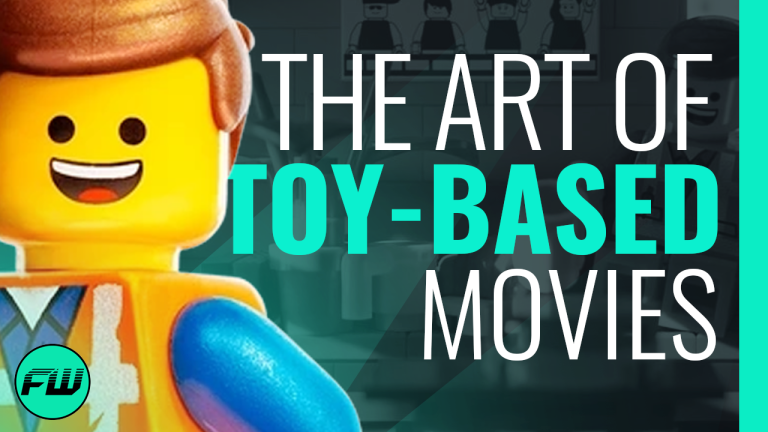In this FandomWire Video Essay, we explore why Avatar: The Way Of Water is better than the original.
Check out the video below:
Subscribe & hit the Notification Bell so you never miss a video!
Is Avatar: The Way Of Water Better Than The Original?
James Cameron’s juggernaut sci-fi/action epic Avatar completely took the world by storm when it debuted in theaters back in 2009, changing the landscape of blockbuster cinema forever. Its raging success was a testament to the power of simple storytelling, and the sheer spectacle of visual effects. Experiences such as the ones that Cameron brings to the cinema are best enjoyed on the biggest screen imaginable— with a bucket of popcorn in hand, and a pair of 3D glasses fixed firmly upon your face. And people show up to these types of movies in droves. The box office numbers speak for themselves, James Cameron is now responsible for three out of the six highest-grossing movies of all time. These include Avatar, Titanic, and Avatar: The Way of Water—no other filmmaker has ever held this honor.
There is a thirteen-year gap between Avatar and Avatar: The Way of Water. That’s a significant lapse, but far from the largest gap we’ve seen between blockbuster sequels. Blade Runner 2049 released an astounding 35 years after its predecessor, and similarly, Top Gun: Maverick released 36 years after the original soared into cinemas. Two perfect examples of the polar result these long delayed sequels can face at the box office. And yet, The Way of Water found itself on the right side of that divide garnering numerous awards, raking in over two billion at the box office, and boasting an impressive certified fresh Rotten Tomatoes score of 77% with critics, and 92% with audiences.
So, why did the thirteen years between films work in Avatar: The Way of Water’s benefit? How does this sequel manage to function on a grander scale than the first, with far deeper emotional connection, and how exactly did Sigourney Weaver convincingly portray a fourteen-year-old girl at age seventy-three? The easiest way to explore what makes The Way of Water so special is by breaking it down into three distinct categories.
If you’re enjoying the content, be sure to give us a like, and don’t forget to subscribe and hit the notification bell so you never miss a video.
CATEGORY 1: THE VISUAL EFFECTS
In 1994, a much younger James Cameron wrote an 80-page script treatment for a movie he called Project 880 that would eventually become Avatar, the highest-grossing film of all time! Cameron planned to make this his next movie after Titanic, but special effects in the 90s were, quite simply, not up to snuff for a project of this scale. The film was promptly put on the back burner, biding time for CGI, and particularly, motion capture filmmaking to evolve. As it took almost twenty years for the effects to catch up to the world of Pandora and the Na’vi, so too did the effects need to evolve for the inevitable sequel.
The monumental thirteen-year gap between the 2009 release of Avatar and the 2022 release of the sequel meant that the end result was a visually spectacular raising of the VFX bar. Had the movie released in 2014 as originally planned, it’s highly unlikely that it would look as impressive. This is particularly true in terms of the underwater sequences which, of course, make up a significant percentage of The Way Of Water runtime. Liquid is a notoriously difficult element for animation teams to deal with due to its clear, fluid nature. According to an article from Designbuzz.com, “Liquids are one of the most difficult things to animate as the designers must consider texture, movement, and how it reacts with other objects.”
The answer to this quandary eventually came from the VFX masters over at WETA workshop and marked a significant milestone for visual effects in general and in terms of underwater performance capture. A giant tank was constructed 32 feet deep, containing tens of thousands of gallons of water, so complex that it was capable of simulating waves and currents. The entire cast of actors were trained to hold their breath underwater, and officially scuba-certified—Kate Winslet set the record for the longest time holding her breath underwater, at a whopping seven minutes and fourteen seconds. That would have probably come in handy back when the Titanic sank.
In addition to the complex “wet-on-wet” filmmaking, the motion capture itself presented its own array of unique challenges. To be more specific, Spider, played by young actor Jack Champion, is notable for being one of the few humans that is onscreen for the majority of the film’s runtime. Blending Spider naturally into scenes with other Na’vi was harder than one would think, as Champion actually had to do his entire performance twice! At just 13, Champion acted as Spider once among the other actors, then again at 15 in order to make the character’s appearance as seamless as possible. It truly does reflect in the final product, whereas other big-budget features that don’t go as in-depth are clearly just people acting opposite nothing.
Another huge leap forward has been the high frame rate 3D images. Essentially, this technique adds a hyper-realism to everything we see unfold onscreen—in a movie as immersive as The Way of Water, this is a major plus. HFR has to do with the amount of frames per second the human eye can see while watching a film; a typical feature runs at 24 frames per second, whilst The Way of Water runs at 48 frames. HFR is not a new concept—it first rolled out in theaters with Peter Jackson’s The Hobbit series, and Gemini Man ran at a wild 60 frames per second, but The Way of Water is the first time the smoothing and fluidity of motion actually works to the benefit of the viewer. Because the camera is constantly following characters in bodies of water, or across these impressively-rendered landscapes built from the ground up, the HFR technology adds an entire new layer to an already staggering experience. Cameron’s big gamble seems to have paid off either way. On an approximate budget of $350 million, Avatar: The Way of Water has already proven its existence, and then some, built on the strength of much stronger characters.
CATEGORY 2: A DAZZLING NEW ECOSYSTEM
WETA created 57 new species of sea creatures with the help of real-life coral reef biology researchers. This attention to detail on the water and ecosystem of Pandora’s oceans make all the difference in immersing the audience into the action. In comparison, the first Avatar had only a handful of full-bodied animals native to Pandora that Cameron designed with the help of an extensive team of creature designers. We see familiar beings like the graceful airborne Banshees, but unexplored waters add a whole new layer of awe. Swimwings, which use their tails in the water to propel themselves, also have gills allowing them to breathe underwater. Wondrous creatures swirl all around us each time we dip into the depths of Pandora’s oceans, and each viewing lets the viewer soak in the details to an ever greater effect.
Perhaps the best new creation of The Way of Water are the mysterious and majestic whale-like behemoths, the Tulkun. These beauties have a strong familial connection to the water Na’vi and communicate with them on an almost metaphysical level. The Tulkun are highly sought after for a special golden-colored liquid that can be found deep within the core of their skulls. Hunters senselessly track them down, meticulously cut them off from their pack, beach them, and murder them with harpoons. Our harmony with nature hangs in a delicate balance, no more apparent than in the way each and every character acts toward these special water whales.
Another element of the project which only benefited from its long delay is the film’s message regarding climate change due to humans intervening with the natural world, interwoven in the script by way of these breathtaking animals and character bonds. The uptick in anti-poacher messaging in recent years only bolsters the points being made in The Way Of Water. Throughout the movie, Cameron puts focus onto the rich ties between the Na’vi and the world around them, driving it far beyond the connections we learned of in the first film. Their queues, or neural whips, present a tendril that locks into living beings all around Pandora in Avatar, which only scratched the surface of that concept by comparison when considering the forbidden friendship of The Way of Water. A relationship defined by an equal understanding and communication through sign language goes deeper into indescribable psychic links.
CATEGORY 3: THE FAMILY DYNAMIC
Aside from the obvious technical marvels, Cameron seems to have learned from Avatar’s minor missteps in character definition and development. The lead character of the franchise, Jake Sully, has undergone a huge improvement in terms of his character development. Surprisingly, he comes across as much more believable and relatable in his giant blue permanent body in The Way Of Water than he ever did in his human form in the predecessor. Jake, thriving in his role as the sixth Toruk Makto, welcomes a whole family into his tribe. He becomes a powerful father figure who will protect his children at any cost, willing to sacrifice everything if it means their safety. Jake has grown exponentially thanks in large part to the major time jump that is made more believable by that decade-plus delay between movies.
There is a possibility that this improvement in character development could be due to the fact that James Cameron wrote Avatar by himself, whereas this time around, he worked with collaborators. Furthermore, Jake has been raising a family with his loving soulmate Neytiri, played again by Zoe Saldaña in an expressive, soulful performance. As the Sully family matriarch, the passion behind Neytiri’s every action sends ripples of meaning trickling down the waters of this film. The parents serve as the stable rock of The Way of Water, but it’s the children that are the heart of it.
Comprised of the very definition of a mixed-race family, the Sully clan are tight-knit. These family dynamics are the movie’s beating heart–there’s reckless youngster Lo’ak, his responsible, wise-beyond-his-years older brother Neteyam. An embodiment of the purest, sweetest naiveté in seven-year-old Tuk, spunky human and Na’vi obsessive Spider, and the mystically-mysterious daughter of the first film’s Dr. Grace Augustine, Kiri.
Kiri presents what is perhaps actress Sigourney Weaver’s biggest acting challenge of all time: convincingly portraying a 14-year-old girl. Digitally de-aged, Weaver’s role is essential—James Cameron has an obvious long-standing relationship with Weaver, and the way he ties her young-at-heart nature into his own real-world obsession with the climate is astounding. The motto of the Sully clan, “Sullys stick together,” fortifies these relationships into living, breathing beauty. New characters add to the breadth of the film’s scope by way of introducing a water-based Na’vi tribe, known as the Metkayina — The Way of Water certainly leaves room for far more Na’vi interaction, especially when one considers the impressive nature of an alternate take on villainous Colonel Quartitch, now in full blue-body. It could have been disastrous, but in the hands of Cameron and his creatives, the sky’s the limit.
In the seven years between 2010 and 2017, when Avatar’s sequel was first announced, we began to wonder if we would ever truly see this saga come to fruition. All four scripts for subsequent Avatar movies were already fully written, and in the words of James Cameron, “stem to stern…and fully designed.” All of this was before a single frame was actually shot, according to The Hollywood Reporter. A collaboration between Cameron and Planet of the Apes scribes Rick Jaffa and Amanda Silver is likely what pulled the film out of the development stage.
There’s a pretty simple lesson to be learned here, and quite frankly, that’s to never underestimate James Cameron. Time and time again, Cameron has proved he is game for reinvention and pushing the effects envelope to its furthest extreme. Be it ravenous xenomorphs and their angry Queen in 1986’s Aliens, the foreboding Judgment Day of 1991’s Terminator 2: Judgment Day, or a cruise liner destined for tragedy on the high seas of 1997’s Titanic, James Cameron is a master storyteller always prepared to utilize each and every item in his toolbox.
Do you agree that the thirteen-year gap between Avatar and The Way of Water worked in its favor? What other series benefited from a long-delayed sequel? Let us know in the comments. Be sure to like, subscribe and hit the notification bell to never miss a video. And we’ll see you on your next visit to Pandora.
Follow us for more entertainment coverage on Facebook, Twitter, Instagram, and YouTube.
Note: If you purchase an independent product featured on our site(s), we may earn a small commission from the retailer. Thank you for your support.








